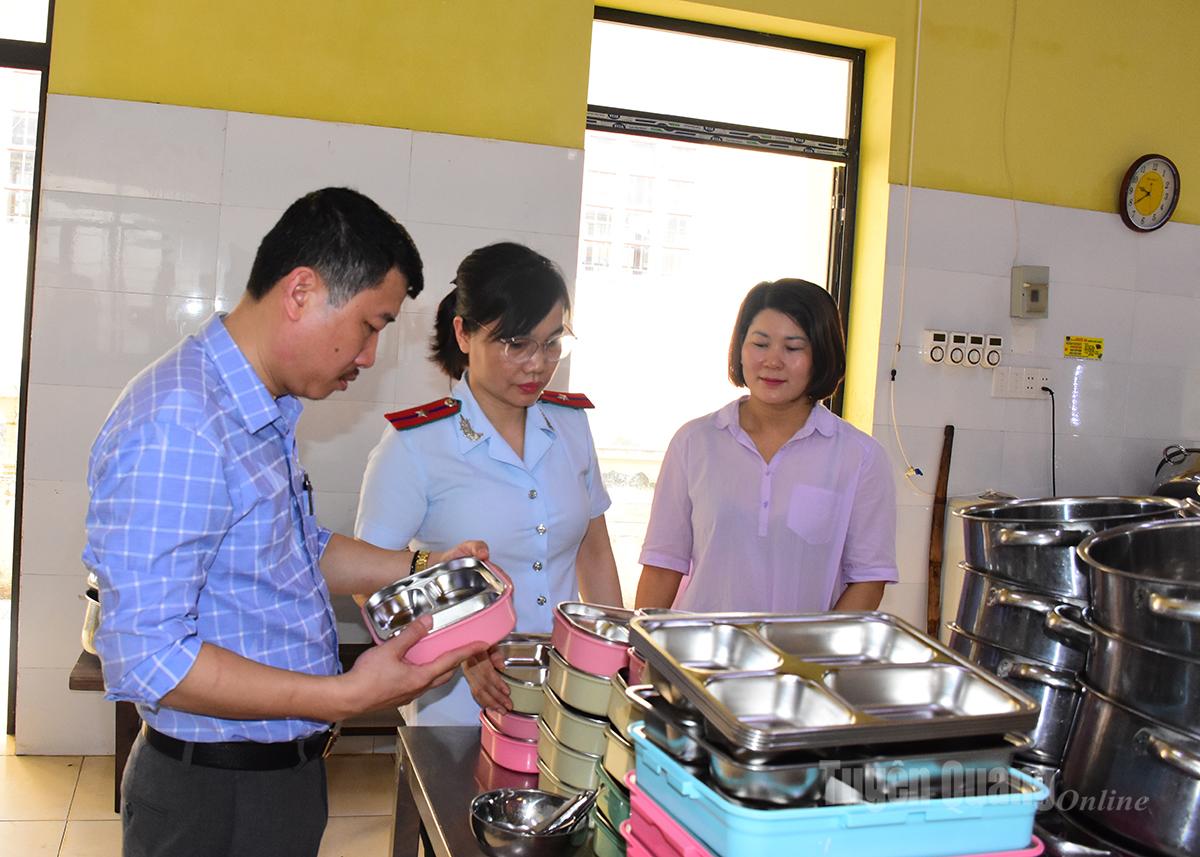Enhancing food safety management
Food safety remains a pressing concern in Tuyen Quang province, with numerous violations detected since the beginning of the year. Authorities have uncovered cases of toxic additives in processed food, spoiled frozen meat, unhygienic canteens, and mass food poisoning incidents.
 |
According to the provincial police, 110 violations of food safety regulations have been handled, with fines exceeding VND335 million and more than VND700 million worth of unsafe goods confiscated. Notably, hundreds of kilograms of pork rolls containing borax (a harmful chemical used in industry) were seized. Market inspectors also discovered nearly four tons of decomposed frozen chicken lacking labels and veterinary inspection stamps. In another case, 16 workers in Yen Son district suffered suspected food poisoning after a company lunch.
The health sector reported that in 2024, thirteen food poisoning outbreaks affected 128 people, while 18 facilities were fined for violations. Yet, counterfeit and substandard food products continue to infiltrate the market. Oversight remains challenging, as over 95% of food businesses are small-scale, often family-run, with limited compliance. Meanwhile, inspection forces are overstretched, equipment is inadequate, and current fines are often inappropriate for small enterprises.
The Departments of Industry and Trade, Agriculture, and Health have stepped up inspections, awareness campaigns, and enforcement. However, significant “loopholes” persist. Supervision mainly targets large enterprises, while small household businesses are often only subject to warnings and reminders.
Experts warn of multiple food safety risks, ranging from microbial contamination to toxic chemicals and spoiled ingredients. Such hazards can cause acute poisoning and even fatalities if not promptly treated.
Ensuring food safety requires joint efforts from authorities, businesses, and citizens. Consumers are urged to reject unsafe products, prioritize goods with clear origins, and report violations to competent agencies. Only with collective responsibility and vigilance can the gaps in food safety management be effectively addressed.
Minh Hoa





READER COMMENTS